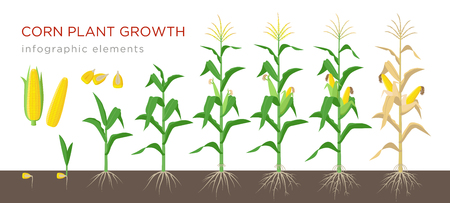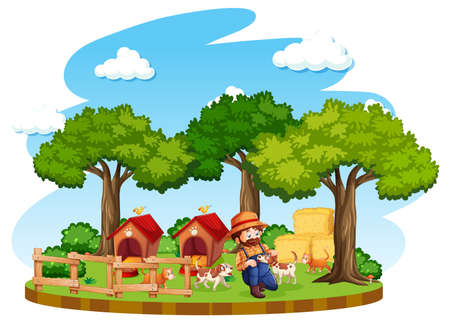1. Assessing Your Backyard Space
Before diving into a backyard makeover, it’s important to take a step back and get a clear picture of what you’re working with. A good assessment helps you plan smarter and avoid costly mistakes later on. Whether your outdoor space is big or small, evaluating it properly is the first step toward creating a landscape that fits your lifestyle and budget.
Take Stock of Your Current Layout
Start by walking around your yard and observing its existing features. Make note of any patios, decks, trees, garden beds, or structures already in place. Pay attention to areas that get full sun versus those that stay shady most of the day. This will help you decide what plants might thrive and where you can add new features.
Things to Look For:
| Feature | Why It Matters |
|---|---|
| Sunlight Exposure | Helps you choose the right plants and seating areas. |
| Soil Condition | Affects plant health and drainage—test for quality if unsure. |
| Existing Structures | Consider whether to keep, update, or remove them. |
| Drainage Issues | Poor drainage can harm plants and damage structures over time. |
| Wind Patterns | Makes a difference for fire pits, seating comfort, and plant placement. |
Identify Your Needs and Goals
Think about how you want to use your backyard. Are you looking for a quiet retreat, a space for kids to play, or an area to entertain guests? Your goals will shape the layout and design choices moving forward. Jot down your top priorities so you can focus on what matters most without getting overwhelmed by too many ideas.
Common Backyard Goals:
- Create a low-maintenance garden with native plants.
- Add outdoor seating or dining areas.
- Build raised beds for vegetables or herbs.
- Design a pet-friendly space.
- Install lighting for evening use.
Be Realistic About Maintenance
A beautiful backyard only stays beautiful if you can keep up with the maintenance. Ask yourself how much time you’re willing to spend each week on mowing, weeding, watering, or pruning. If youre short on time, consider drought-tolerant plants or hardscaping elements like gravel paths and mulch beds that require less upkeep.
Quick Tip:
If you’re not sure how much maintenance different options need, visit local nurseries or ask neighbors about their landscaping experiences. You’ll get real-world insights that can save time and money down the road.
This foundational step sets the stage for a successful backyard transformation. With a better understanding of your space and needs, youll be ready to move forward with confidence—and stay within budget while doing it.
2. Setting a Budget and Prioritizing Features
Before you start digging or buying plants, its important to set a realistic budget for your backyard makeover. A clear budget helps you avoid overspending and ensures that your money goes toward the features that matter most to you and your family.
How Much Should You Spend?
Your budget depends on the size of your yard, the condition it’s in now, and what you want to include. For beginners aiming for a cost-effective makeover, starting with $500–$5,000 is reasonable. Keep in mind that small changes can make a big difference if planned well.
Break Down Your Costs
Create a simple breakdown of potential costs so you know where your money is going. Heres an example:
| Feature | Estimated Cost Range | DIY-Friendly? |
|---|---|---|
| Patio (gravel or pavers) | $500 – $2,000 | Yes |
| Fire Pit | $100 – $500 | Yes |
| Raised Garden Beds | $50 – $300 per bed | Yes |
| Lawn Reseeding or Sod | $200 – $1,000 | No (unless experienced) |
| Outdoor Lighting (solar) | $20 – $200 | Yes |
Decide What Matters Most
You don’t need everything at once. Choose features that offer the best value for your lifestyle. For example:
- If you love hosting friends, prioritize a patio or fire pit.
- If you enjoy gardening or want fresh veggies, start with garden beds.
- If you’re focused on curb appeal, invest in lawn care and lighting.
Create a Priority List
A simple list can help keep your project on track:
- Main Feature: (e.g., Patio for outdoor dining)
- Add-On: (e.g., Fire pit for warmth and ambiance)
- Aesthetic Touches: (e.g., Solar lights, flower beds)
This approach helps you focus on what truly enhances your outdoor space without breaking the bank. Start small, plan smart, and build over time as your budget allows.

3. Choosing Low-Cost, High-Impact Landscaping Ideas
Transforming your backyard doesn’t have to mean draining your wallet. With a few smart and affordable landscaping choices, you can create a space that’s both beautiful and budget-friendly. Whether youre working with a small patio or a larger yard, there are plenty of creative ways to make it shine without overspending.
Mulching: A Simple Way to Refresh Your Yard
Mulch is one of the easiest and most cost-effective ways to tidy up your outdoor space. It not only improves the look of flower beds but also helps retain soil moisture and reduce weeds. You can find mulch in various colors and materials like wood chips, bark, or even rubber options made from recycled tires.
Benefits of Using Mulch:
| Benefit | Description |
|---|---|
| Curb Appeal | Gives garden beds a clean, finished look |
| Weed Control | Reduces unwanted growth in landscaped areas |
| Soil Protection | Helps keep moisture in and protects roots from extreme temperatures |
Create Rock Pathways for Function and Style
Rock or gravel pathways are not only visually appealing but also practical. They guide foot traffic, prevent muddy spots, and add texture to your yard. You can use pea gravel, crushed stone, or flat stepping stones — all available at most home improvement stores for reasonable prices.
Tip:
If you already have leftover pavers or bricks, consider reusing them to build a charming walkway through your garden.
Repurpose Materials for a Personal Touch
You dont always have to buy new items to improve your backyard. Look around your garage or visit local thrift stores for items that can be repurposed as planters, seating, or garden decor. Old wooden crates can become rustic shelves for potted plants, while used pallets can be transformed into vertical gardens.
Creative Repurposing Ideas:
| Material | New Use |
|---|---|
| Pallets | Vertical planter or compost bin |
| Mason jars | Hanging lanterns or herb containers |
| Old tires | Painted flower beds or playful seating |
The key is to think creatively and use what you already have when possible. Small changes like these can make a big difference in how your backyard looks and feels — all without breaking the bank.
4. Planting Smart: Native and Low-Maintenance Plants
If youre just starting your backyard makeover, choosing the right plants can make a huge difference—not only for your wallet but also for your time and effort. One of the smartest moves is to go with native and low-maintenance plants that thrive in your region.
Why Choose Native Plants?
Native plants are those that naturally grow in your local area. Because they’re already adapted to your climate, soil, and weather conditions, they usually require less water, fertilizer, and care than non-native varieties. Plus, they support local birds, bees, and butterflies by providing food and shelter.
Benefits of Low-Maintenance Landscaping
- Lower Water Bills: Drought-tolerant plants need less irrigation.
- Less Upkeep: No constant pruning or fertilizing needed.
- Pest Resistance: Native plants are often more resistant to local pests.
- Eco-Friendly: Helps maintain regional biodiversity and reduces chemical use.
Regional Plant Suggestions
Here’s a quick guide to low-maintenance native plants based on U.S. regions:
| Region | Native & Low-Maintenance Plants |
|---|---|
| Northeast | Black-eyed Susan, Eastern Red Columbine, New England Aster |
| Southeast | Coneflower, Coral Honeysuckle, Southern Magnolia |
| Midwest | Purple Coneflower, Prairie Dropseed, Butterfly Milkweed |
| Southwest | Desert Marigold, Red Yucca, Agave |
| West Coast | California Poppy, Toyon, Douglas Iris |
| Pacific Northwest | Oregon Grape, Sword Fern, Red Flowering Currant |
Tips for Successful Planting
- Know Your Zone: Use the USDA Plant Hardiness Zone Map to find what grows best in your area.
- Group by Water Needs: Place drought-tolerant plants together to avoid overwatering.
- Add Mulch: Helps retain moisture and reduce weeds around your new plants.
- Avoid Invasives: Stay away from aggressive species that can take over your yard.
Create a Balanced Backyard Ecosystem
You don’t have to be an expert gardener to create a beautiful outdoor space. By choosing smart plants that work with your environment instead of against it, you’ll save money, time, and energy—all while helping local wildlife thrive. It’s a win-win for you and Mother Nature!
5. DIY Projects to Transform Your Backyard
If youre just starting out with backyard makeovers, dont worry—you dont need to be a pro landscaper or spend thousands of dollars. There are plenty of easy and affordable DIY projects that can breathe new life into your outdoor space while adding your personal touch. Here are some beginner-friendly ideas to get you started:
Raised Garden Beds
Raised garden beds are a great way to grow vegetables, herbs, or flowers without tearing up your yard. Theyre simple to build with basic tools and materials like untreated wood or recycled bricks. Raised beds also improve drainage and reduce weeds, making gardening easier for beginners.
Benefits of Raised Garden Beds
| Benefit | Description |
|---|---|
| Easy to Build | Use basic tools and affordable materials like wood or cinder blocks. |
| Better Soil Control | You can fill beds with high-quality soil perfect for growing plants. |
| Fewer Weeds | The raised design makes it harder for weeds to invade your garden space. |
Pallet Furniture
Wood pallets can be repurposed into stylish and functional outdoor furniture such as benches, coffee tables, or even plant stands. Theyre often free or cheap from local hardware stores or warehouses. With some sanding and weatherproof paint or stain, you’ll have durable furniture that adds charm to your backyard setup.
Simple Pallet Project Ideas
- Pallet bench with cushions for a cozy sitting area
- Vertical pallet planter for herbs or succulents
- Outdoor coffee table with built-in storage space
Lighting Hacks
Good lighting can completely change the mood of your backyard. You don’t need an electrician—just get creative with solar lights, string lights, or mason jar lanterns. These options are budget-friendly and easy to install without any wiring needed.
Easy Lighting Options for Beginners
| Type of Light | Why Its Great |
|---|---|
| Solar Path Lights | No wires needed; they charge during the day and light up at night. |
| String Lights | Create a warm ambiance; hang them on fences, trees, or pergolas. |
| Mason Jar Lanterns | Add rustic charm; use tea lights or battery-powered fairy lights inside. |
These easy DIY projects not only keep costs low but also allow you to infuse your backyard with personality and functionality. Whether youre planting veggies, relaxing on homemade furniture, or enjoying soft lighting under the stars, these beginner-friendly upgrades will help turn your outdoor space into a place you love spending time in.
6. Seasonal Maintenance and Future Planning
Keeping your backyard in great shape doesn’t have to be expensive or time-consuming. With a few seasonal maintenance routines and smart planning, you can enjoy a beautiful outdoor space all year long—without spending a fortune.
Year-Round Yard Care: What to Do Each Season
Each season brings different needs for your yard. Here’s a simple guide to help you stay on top of things:
| Season | Maintenance Tips |
|---|---|
| Spring | Rake up leftover leaves, prune shrubs, plant new flowers, fertilize lawn, check irrigation system. |
| Summer | Mow lawn regularly, water early in the morning, deadhead flowers, apply mulch to retain moisture. |
| Fall | Rake leaves, plant fall flowers or bulbs, aerate soil, clean out garden beds, trim trees if needed. |
| Winter | Protect plants with covers if needed, store tools properly, plan for spring projects, prune dormant trees. |
Planning Future Upgrades on a Budget
You don’t have to do everything at once. Spacing out your upgrades over time helps spread out the cost and effort. Here are some tips for planning ahead:
1. Make a Wish List
Write down ideas like adding a fire pit, installing raised garden beds, or creating a patio. Prioritize what matters most to you and your family.
2. Set a Seasonal Budget
Create a small budget for each season so youre not overwhelmed by big expenses all at once. Even $100 per season can go a long way when shopping smart.
3. Look for Sales and Freebies
Watch for end-of-season sales at garden centers or local hardware stores. Also check online marketplaces where neighbors might be giving away or selling used materials like bricks or pavers.
4. DIY When Possible
Tackling simple projects yourself—like building planter boxes or installing solar lights—can save money and give you a sense of accomplishment.
Pro Tip:
Create a digital folder with inspiration photos, plant ideas, and links to materials you want to buy later. This makes it easy to stay focused and avoid impulse buys.
With regular seasonal care and thoughtful planning, your backyard makeover will continue to grow better with time—just like the plants in it!


